While the CHAQ2020 are busy preparing their report, winter has fallen on Esperanza base and the stone hut has been covered with snow. Photos courtesy of TP Carlos Moyano.
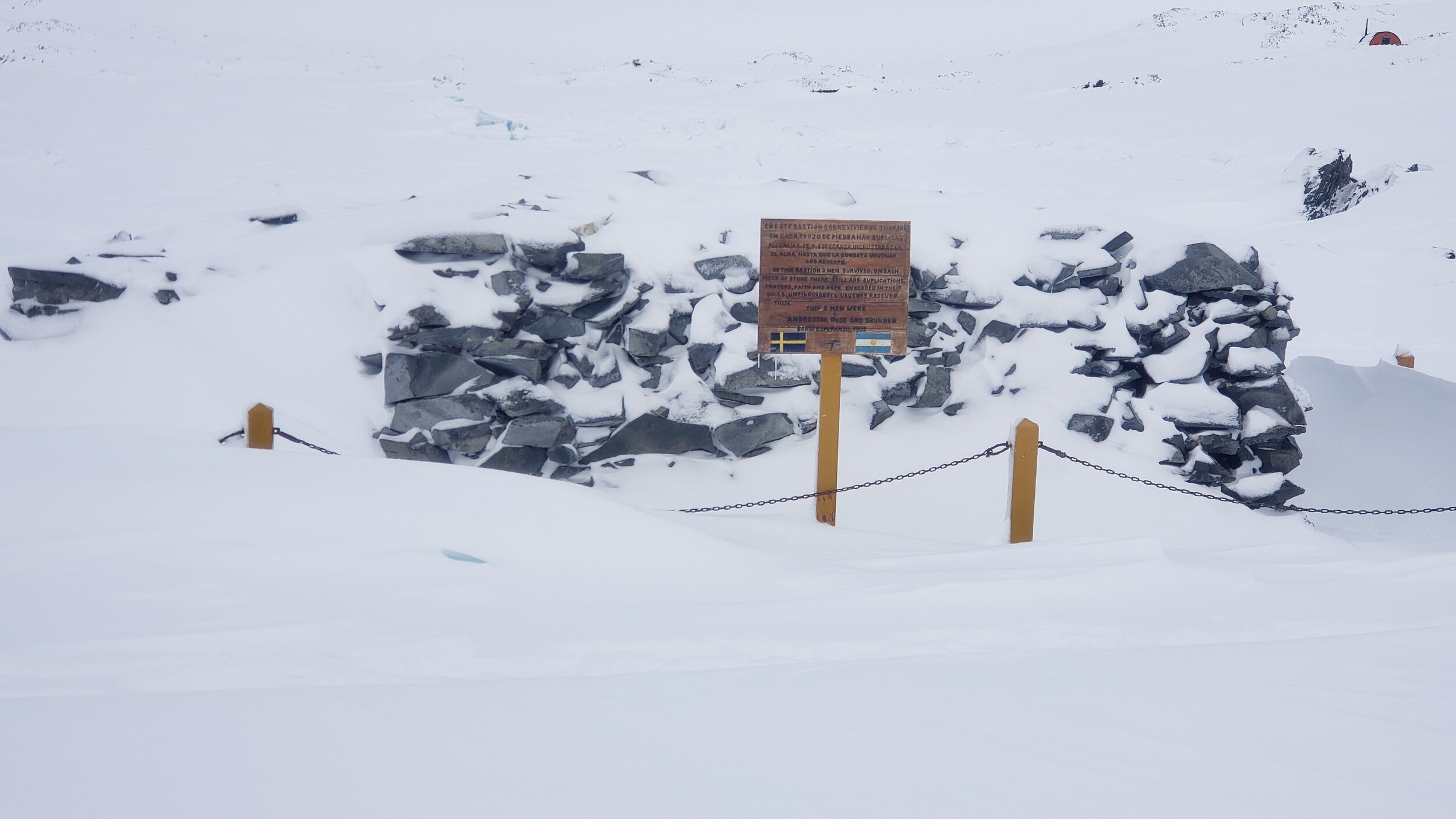

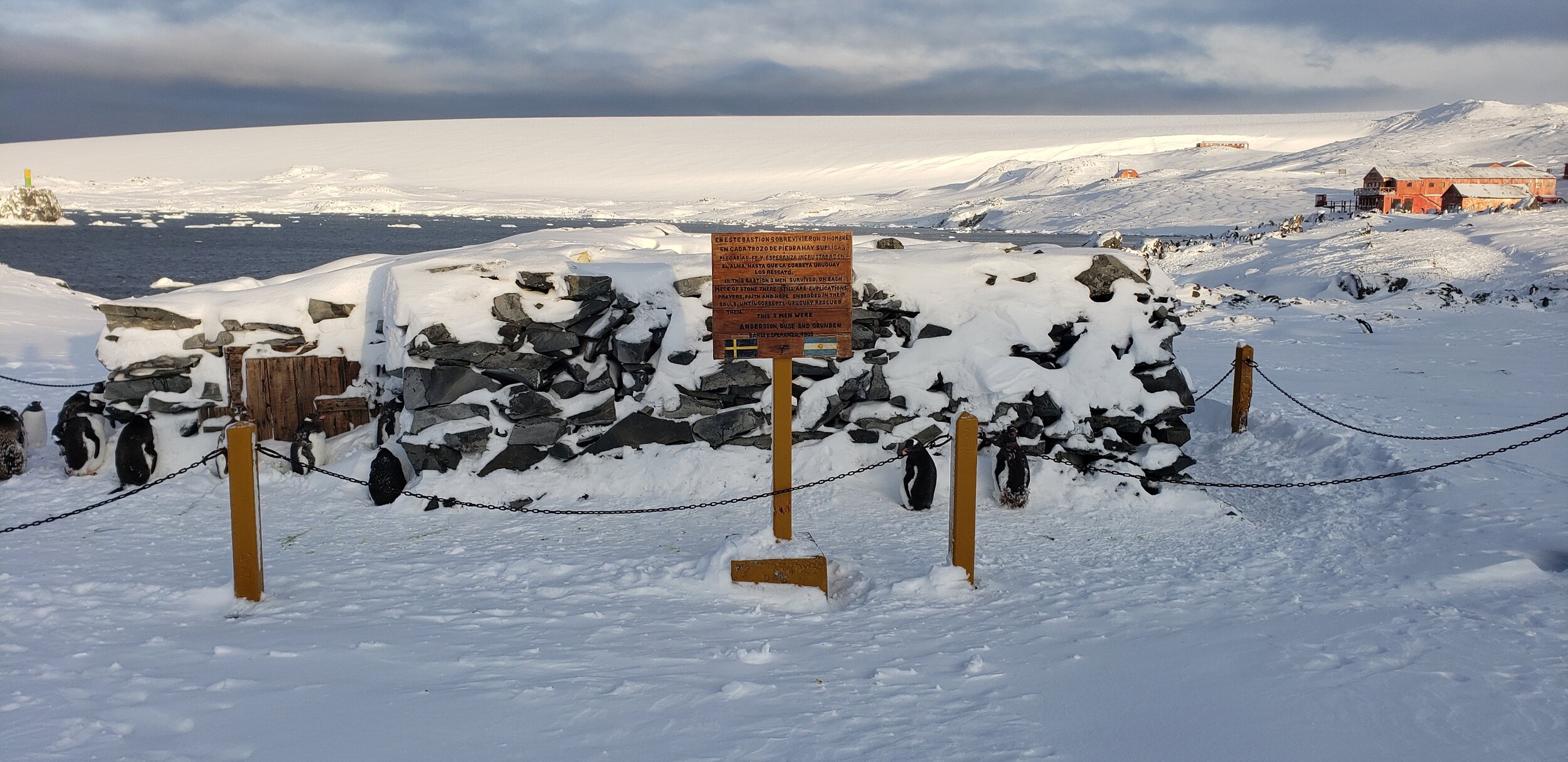
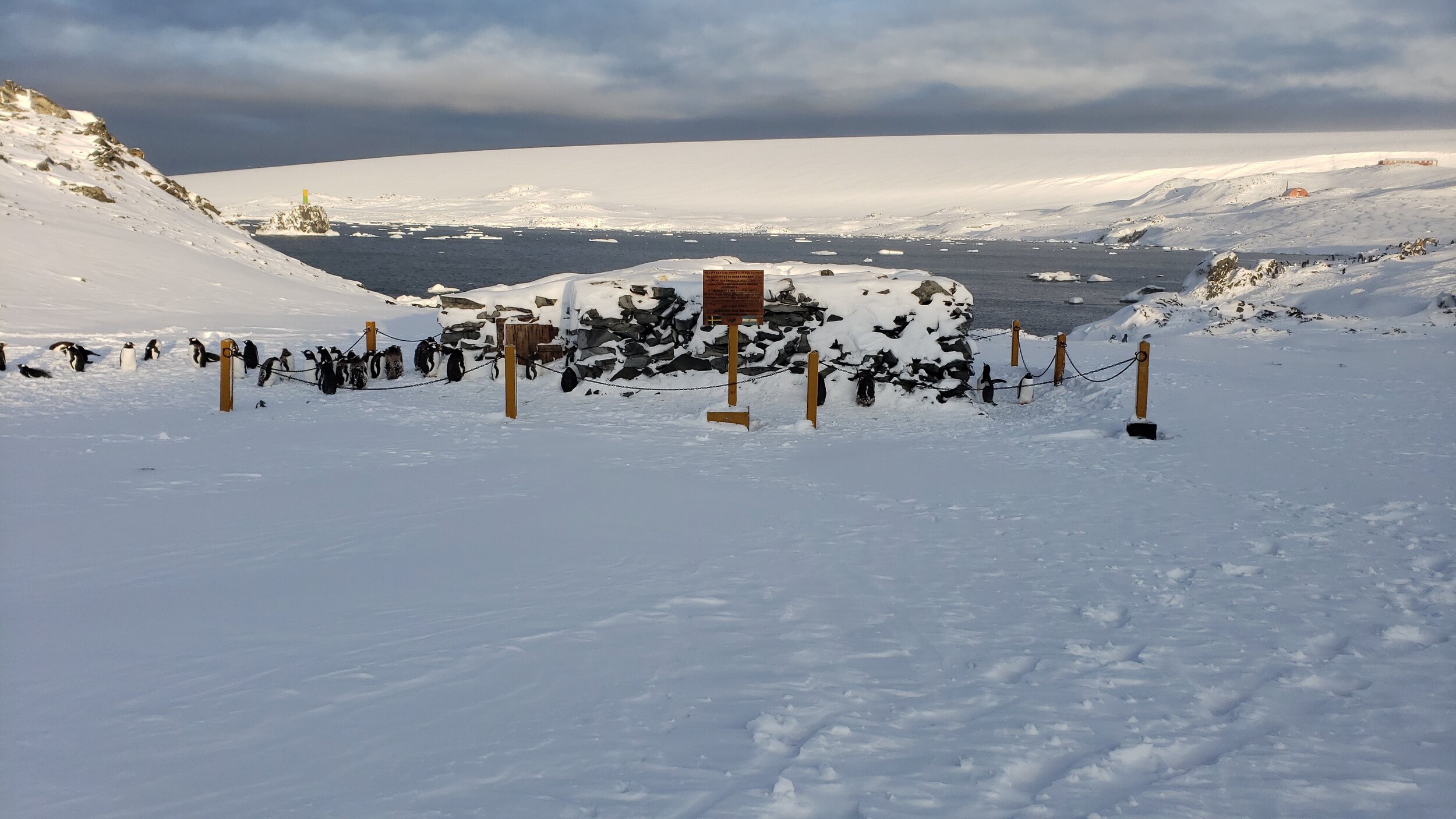
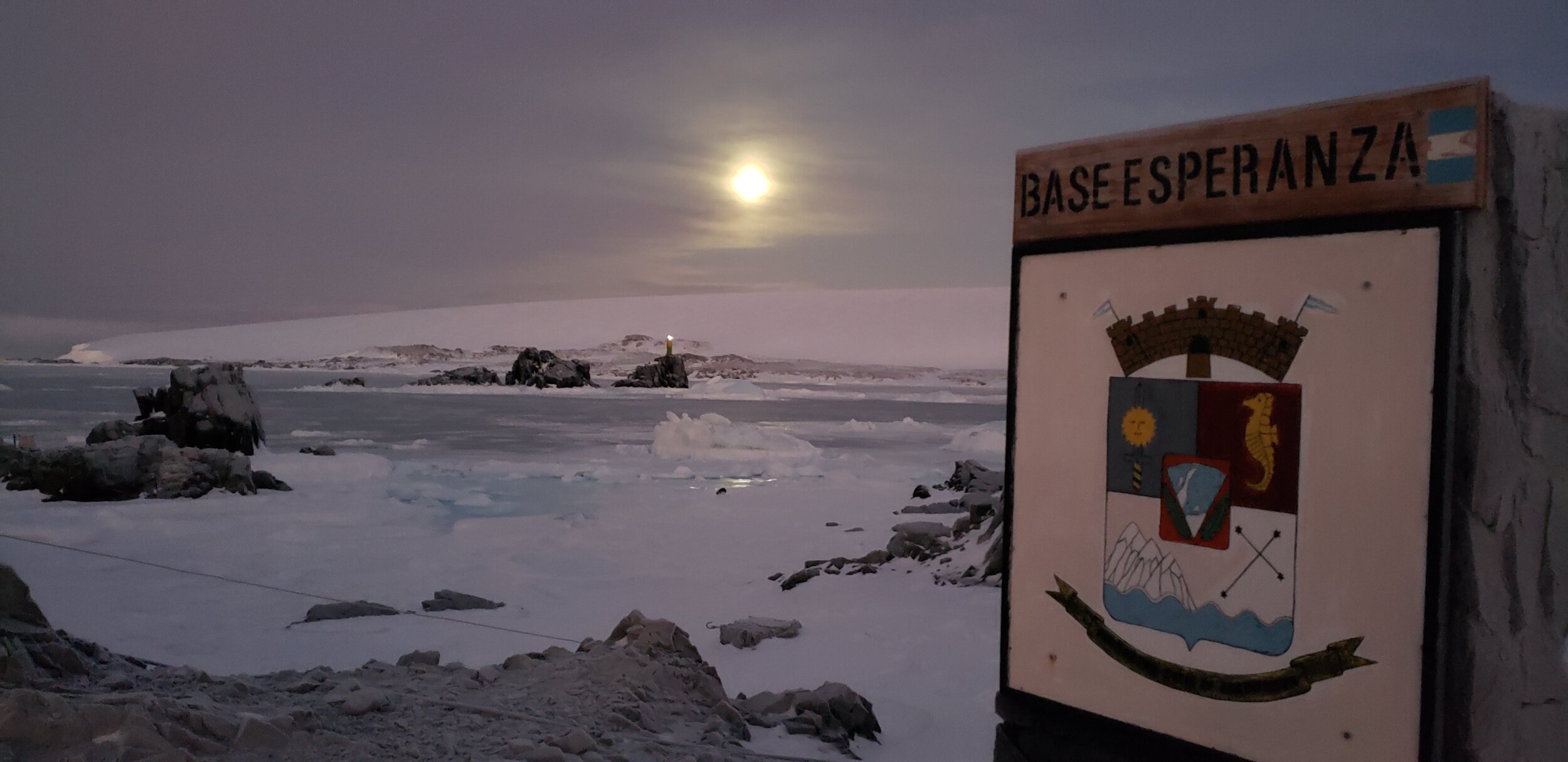
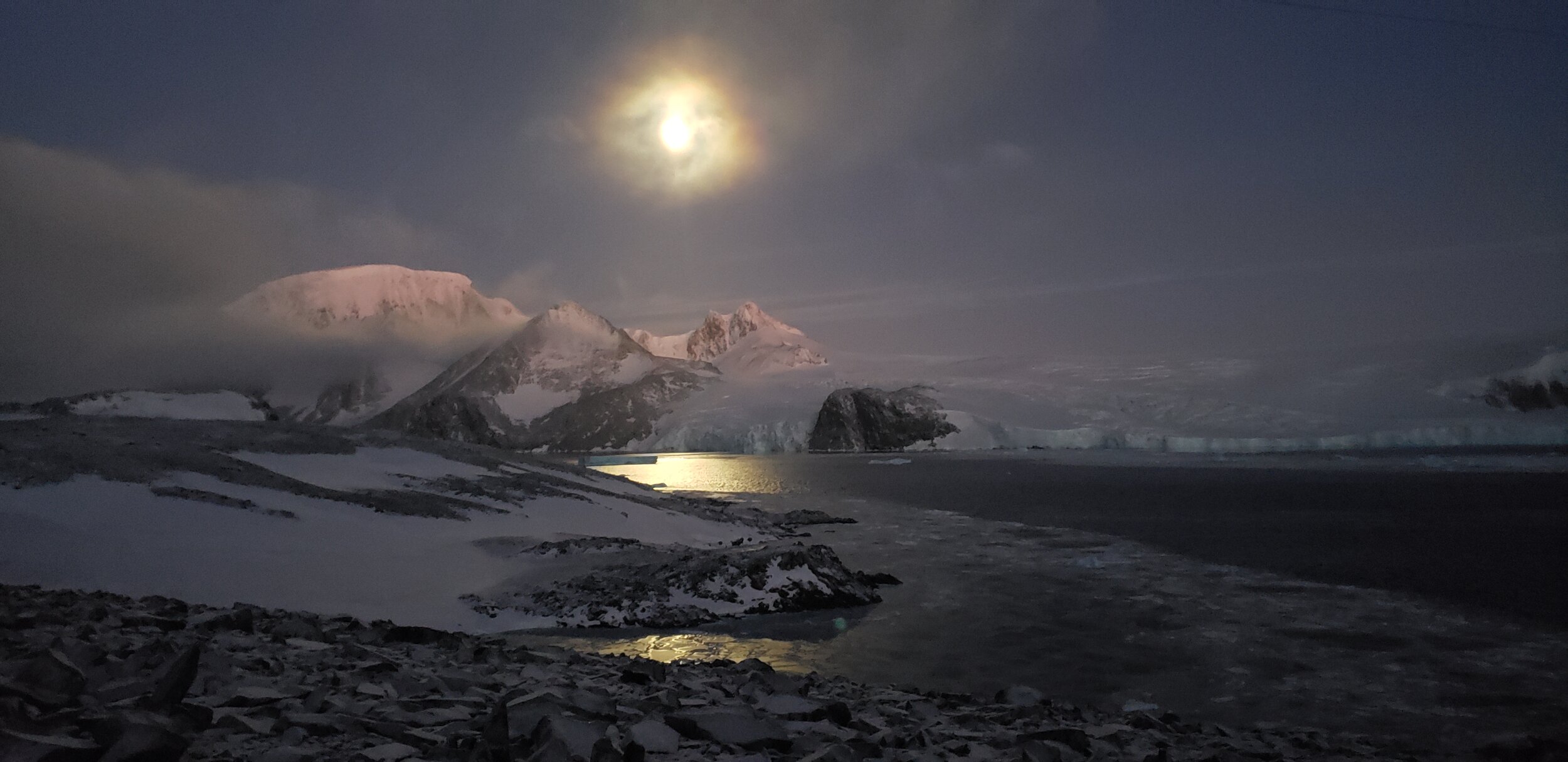

We can only imagine what it meant to spend a winter in this hut.
Samuel Duse writes:
The worst was during the periods of rough weather when we were forced to stay inside the artificial polar darkness of the stone hut, not disturbed by a single ray of light - perhaps only when a heavier storm tore open the ice plaster in the roof. …
We soon learned to predict when the southern storms would hit. Usually, it first started with a quiet snowfall while the barometer sank. When the barometer started to raise again, it was not long before a gust of wind heralded that the dance is starting soon. The newly fallen snow would start to move and it was best to crawl into the stone hut while you could still see something. Here inside you could lay down now and listen to the wild play of the mighty storm. It whispered and roared, it whistled and squeaked, the roof pounded with flying ice bits and small stones. It sounded as if all hell’s demons were trying hard to lay their hands on us here inside.
But the stone hut was sturdy and no storm could pull it down. Despite the brutal cold inside, filthiness and darkness, we snugged into our sleeping bags with a feeling of gratitude and the feeling of triumph was not missing when we saw that wind was powerless against the creation of our hands.
The longer we laid captive there inside, the more desperately we desired to go back again towards the light, towards the blinding sun that gave warmth and life….
And then we finally got out again from the darkness, we felt like the sky shone lighter and bluer than ever before, that the glacier glittered in sunlight in richer colours, and that Mt Flora’s ridged hillsides rose skywards more majestically than ever. We filled our lungs with the clean fresh air and a feeling of freedom brimmed our hearts amidst our captivity.
Duse, Amongst Penguins and Seals, pp 178-181.
Stockholm, Beijers Bokförlagsaktiebolag, 1905.
Translated: Kati Lindström




